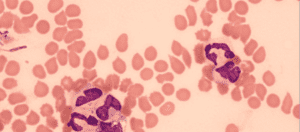If you Google “What does jasmine do to dogs?” you may get pages that say that jasmine is completely non-toxic for dogs. Or that it is a deadly poison. Or that it causes kidney damage or allergies. Or doesn’t.
What does jasmine do to dogs?
The reason Googling to find answers to your questions “Can jasmine cause an allergic reaction in dogs?” or “What does jasmine do to dogs?” yields such unreliable results are technical (for readers who are knowledgeable about SEO, the reason is Google’s local search algorithm), but it basically has to do with the fact that there is more than one plant called “jasmine.”
Different kinds of jasmine have different effects on dogs. In this article, we will tell you everything you need to know to keep your dog safe from the ill effects of any of them. We will start with the question that comes up the most often.
Is Star of Jasmine Poisonous?
The good news about Star of Jasmine is that no part of the plant is poisonous to your dog (or your cat). Traditional Chinese Medicine even uses the Star of Jasmine as an ingredient in traditional herbal medications, calling it luoshiteng. Traditional Chinese herbalists use all of the above-ground parts of the plant to make restorative tonics to treat twitches, tremors, fatigue, and other issues that occur in the elderly. A scientific paper in The Journal of Essential Oil Research explains that the medicinal benefits of the plant derive from its polyphenols, a class of chemicals that is also found in green tea.
But the same way you would not want your dog to get into your medicine cabinet, you don’t want your dog eating Star of Jasmine, even though it is not poisonous. My dog, for reasons unknown to me, once decided to nibble on about a six-inch section of the Star of Jasmine plant I had growing by my bedroom window. She didn’t seem really sick, but she vomited and had diarrhoea for several days/
The canine digestive system adjusts itself to extract maximum nutrition from food. Any unusual food, even a non-toxic food, upsets the dog’s digestive process and can cause vomiting, diarrhoea, drooling, or, in rarer instances, constipation.
The plant chemicals in Star of Jasmine aren’t toxic, but they have to be broken down by enzymes in your dog’s liver. This means that fewer protective enzymes may be available if your dog also gets into something truly poisonous.
Are dogs allergic to Star Jasmine? Allergies are not unheard of, but digestive distress caused by toxicity to the liver is much more common.
It is best to discourage dogs from eating Star of Jasmine. But which jasmine is that? Here is how you can tell:
- It helps to make a note of the label when you buy the plant. Star of Jasmine is also known as Star Jasmine, Confederate Jasmine, Chinese Jasmine, Chinese Star Jasmine, Southern Jessamine, Confederate Jessamine, and by its botanical name, Trachelospermum jasminoides.
- Star of Jasmine produces numerous small, trumpet-shaped white flowers with five petals. The flowers are intensely fragrant (which is why I planted my Star of Jasmine by my bedroom window). The leaves are lance-shaped in the spring but oval in the summer, dark green during the growing season and bronze in the winter. Twigs are “hairy” in the spring but turn smooth as the growing season goes on.
- Your Star of Jasmine plant is a vigorous vine that grows up to 10 feet (3 meters) up a trellis or a wall. When the ground is wet for an extended period, it puts out aerial roots.
If you have a Star of Jasmine plant, chances are you live in California or the Southeastern United States. It is winter-hardy only in USDA Hardiness Zones 8 through 11.
What Dog Owners Need to Know About Day-Blooming Jasmine
So, if Star of Jasmine isn’t toxic, what kind of jasmine is?
The problem plant is another ornamental plant identified as jasmine, Day-Blooming Jasmine, sometimes identified by its scientific name, Cestrum diurnum, or as Wild Jasmine.
Day-Blooming Jasmine isn’t something you ordinarily plant. It is an escaped tropical plant that grows in warm-winter locations in Florida, Texas, California, Hawaii, and Mexico.
This jasmine grows up to 16 feet (5 meters) tall. It has white flowers like Star of Jasmine, but they yield green berries that later turn black. The flowers grow in clusters on branches on the side of the plant. The leaves are glossy green on top, and the plant is usually set back or killed by frost.
Day-Blooming Jasmine is a deadly poison for dogs, but it doesn’t cause its effects right away. This plant contains a chemical that interferes with, actually amplifies, the effects of vitamin D. When dogs eat Day-Blooming Jasmine, their bodies start depositing calcium in places other than their bones.
These dogs may acquire a humped-up appearance. Their cartilage may slowly turn into bone, so they may develop a gait that looks like hip dysplasia, although it isn’t. They become lethargic and eventually develop kidney failure.
Some dogs develop calcium deposits in their arteries and have heart attacks.
There isn’t any antidote for toxic exposure to this jasmine. The only thing to be done is to make sure your dog does not consume any more of the plant and wait for natural processes to rebalance the calcium in his body.
Can Jasmine Cause an Allergic Reaction in Dogs? What About Night-Blooming Jasmine Allergy?
Dogs can come down with an allergic reaction when they sniff or eat Night-Blooming Jasmine flowers. But it isn’t just the Night-Blooming Jasmine that causes it. The allergy is also caused by a fungus that grows on Night-Blooming Jasmine flowers.
Let’s back up a little so you can identify yet another plant known as jasmine to protect your dogs.
Night-Blooming Jasmine is a plant in the Potato Family from the West Indies. It is also known as Night-Blooming Jessamine, Lady of the Night, Night-Scented Jessamine, NIght-Scented Cestrum, and Poisonberry. Some nurseries label it by its botanical name, Cestrum nocturnum.
The flowers of Night-Blooming Jasmine are tiny, just about 1/10 of an inch (2 mm) across, but they are intensely fragrant. The plant has lance-shaped leaves and hairy stems and grows up to 13 feet (4 meters) tall.
Night Blooming Jasmine Allergy
Dogs and people who are allergy-prone may experience allergic reactions when they are exposed to the scent of this jasmine at night. In both dogs and people, Night-Blooming Jasmine’s scent can trigger sneezing, wheezing, teary eyes, asthma, nausea, and even vomiting.
This plant contains a sensitizer called chlorogenic acid. Neither dogs nor people will have allergies the first time they smell it, but allergic reactions increase with increased exposure over a period of weeks or months.
Night-Blooming Jasmine leaves contain solanine, the same toxin found in potato leaves and tomato leaves. Exposure to solanine can cause a pregnant dog to miscarry. Eating small amounts of Night-Blooming Jasmine leaves is not likely to cause anything worse than vomiting and diarrhoea in other dogs. The berries are non-toxic in small doses, but dogs should be discouraged from eating them.
What About Jasmine Tea Allergy?
The kind of jasmine typically used to make jasmine tea is Star of Jasmine. It’s considered medicinal in Chinese herbal medicine. Like any other medicine, whether or not it causes problems is all about how much you take. A small amount of jasmine tea shouldn’t cause your dog any problems, but there is no reason to give it to your dog.
Making tea from other kinds of jasmine could be dangerous for dogs and people. Day-Blooming Jasmine tea is quickly nephrotoxic. It causes severe damage to the kidneys much faster than eating the plant. Tea made from Night-Blooming Jasmine would cause severe stomach upset (like eating green potato peels), so it is unlikely your dog would drink enough tea to cause serious harm unless your dog is pregnant.

